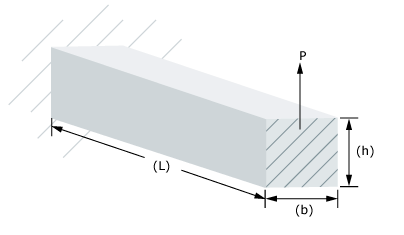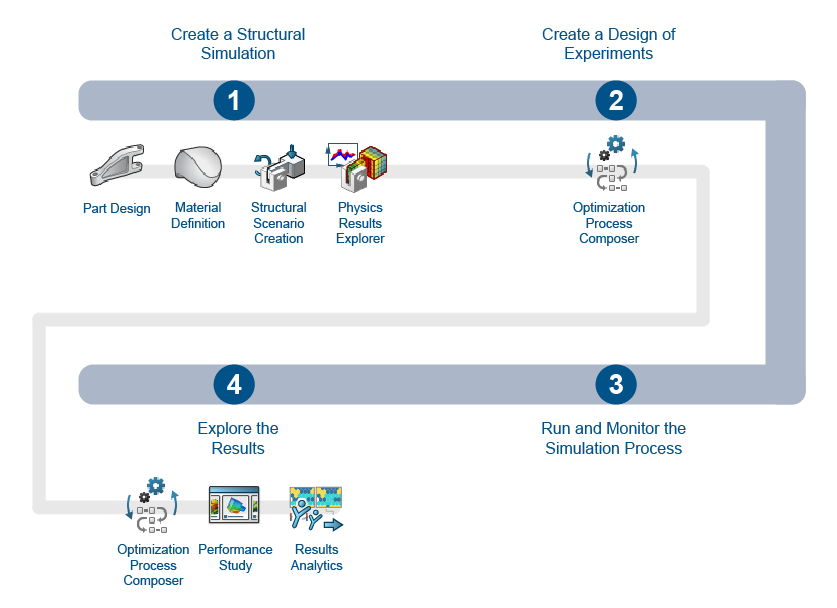Introduction | ||
| ||
Problem Description
You will create a model of a simple cantilever beam. The initial dimensions of the beam are a height of 20 mm (h), a width of 30 mm (b), and a length of 200 mm (L), as shown below:

The beam is fixed at one end, and you will apply a vertical load of 10,000 N to the free end (P). The beam is made of steel, which is assumed to be an isotropic and linear elastic material with a Young's modulus of 200 GPa, a Poisson's ratio of 0.3, and a density of 7800 kg/m3.
You create a physics simulation that calculates the response of the beam to the fixed load. You then include the physics simulation in a Process Composer workflow and drive the simulation from a DOE that varies the dimensions of the beam (height, width, and length) between specified limits. The DOE studies the effect of varying the dimensions on the mass of the loaded beam, the peak von Mises stress, and the maximum displacement, as shown below:

Workflow
The workflow diagram below provides an overview of the example. The diagram shows the apps that you use as you perform the steps in sequence. Clicking a number in the diagram opens its corresponding step in the example.

| Task | Description | |
|---|---|---|
| 1 | Setup | Define your display preferences on the 3DEXPERIENCE platform to help you configure the physics simulation and the Design of Experiments. |
| 2 | Create a Structural Simulation | Create your own geometry and structural simulation of a loaded cantilever beam. |
| 3 | Create a Design of Experiments | Drive repeated runs of the structural simulation with a Design of Experiments. |
| 4 | Run and Monitor the Simulation Process | Execute and monitor the simulation as it runs. |
| 5 | Explore the Results | Explore the results of your process simulation in Performance Study and Results Analytics. |
Complete the workflow steps in the order in which they are listed. Deviation from the instructions associated with each step might cause model or scenario errors, which might prevent convergence of the simulation.